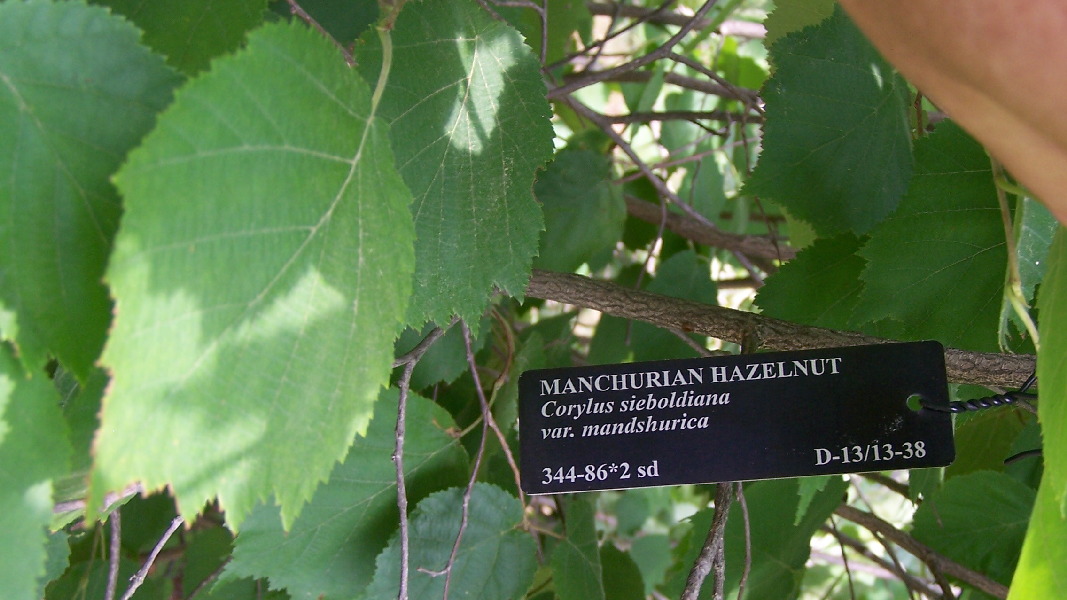Manchurian Hazelnut – Corylus sieboldiana var. mandshurica
The name filbert is the scientifically correct name for the tree and nut. The name is of French origin and the tree was likely first introduced into Oregon by early French settlers. Hazelnut is the name coined by the English and it was applied to the native species by early settlers. Hazelnut is more commonly used in marketing channels. In 1981 the Oregon Filbert Commission decided to conform to the common standard and began emphasizing “Hazelnut.”
According to a manuscript found in China, from the year 2838 B.C., the filbert took its place among the five sacred nourishments God bestowed on human beings. In olden times the filbert was used as a medicine & a tonic. The Greek physician Dioscorides 1800 years ago, emphasized the properties of the filbert: “It cures chronic coughing if pounded filbert is eaten with honey. Cooked filbert mixed with black pepper cures the cold. If the ointment produced by mashing burnt filbert shells in suet is smeared on the head where hair does not grow due to normal baldness or to some disease, hair will come again.”
“The typical mild flavor of Hazelnuts is found in the carbohydrate fraction, rather than in the kernel fat. As a result, the flavor is more easily extracted and concentrated. Volatile flavors are developed upon roasting, chopping or grinding. Hazelnuts are very compatible with a wide variety of foods and flavors. Hazelnuts are very low in saturated fats (7% of the total fat). Mono-unsaturated fats, such as oleic acid, make up about 82% of the total fat content. The remainder is polyunsaturated fat, such as linoleic acid.
Raw Hazelnuts contain between 4 and 6% moisture, while roasted or baked contain about 2-3%. While moisture absorption in finished products is small, the crisp texture can be maintain by coating with sugar, chocolate, fat or edible shellacs and waxes. Hazelnuts have a water activity (aw) of about 0.46 to 0.49 at sale point. The Food and Drug Administration has established 0.70 at 25 C as a safe water activity level. Low moisture and high vitamin E levels contribute resistance to oxidation and development of off flavors. Low water activity and low moisture promote bacteriological and texture stability.
Hazelnuts can be roasted using a conventional oven and a cookie sheet. The oven should be preheated to 275°. Place shelled natural hazelnuts on an non-greased cookie sheet only one layer high. Place in warm oven for 20 to 30 minutes until the skins crack and the nut meats turn a light golden color. You can also roast them at higher temperatures for a shorter period of time or microwave on full power for 3 to 4 minutes.
The skins are quite tight on Oregon Hazelnuts, however, roasting will loosen a considerable amount of the skin. If you want more of the skin removed, pour the nuts onto a clean terry-cloth towel and wrap it closed. Let the nuts steam for 4 to 5 minutes then rub vigorously for 1 to 3 minutes. Rub longer to remove more skin.
Storing shelled hazelnuts in an airtight bag or container in a freezer will keep them fresh and flavorful for a year or more. Storing hazelnuts in the refrigerator between 32° and 35° is the next best place, however, still keep in an airtight and odorless container. Nuts should be allowed to warm to room temperature before using in baking or cooking applications. Properly stored hazelnuts will provide wonderful flavor and texture to most any food, and can be used as a substitute in recipes that call for nuts.” — Hazelnut Growers of Oregon – The Ageless Nut
Family Betulaceae – Alder, Birch, Hornbeam
Trees Index | Pine Family | Beech, Oak | Nut Trees | Birch Family | Magnolias
Tree Encyclopedia / North American Insects & Spiders is dedicated to providing family-friendly educational
resources for our friends around the world through large images and macro photographs of flora and fauna.


